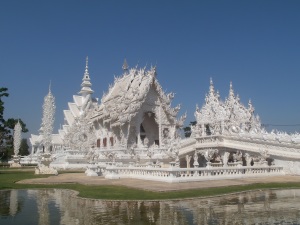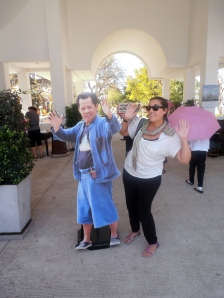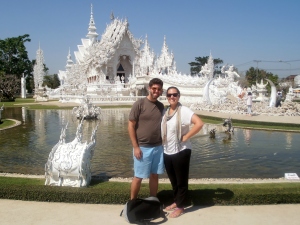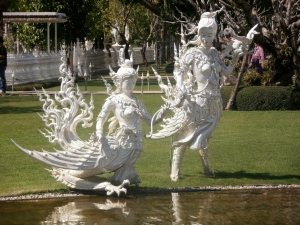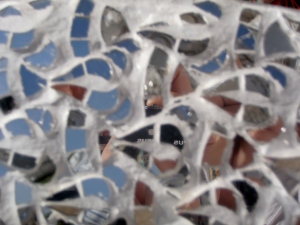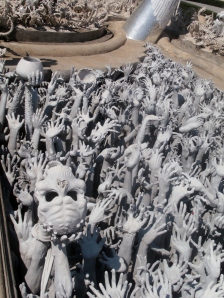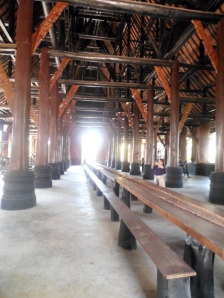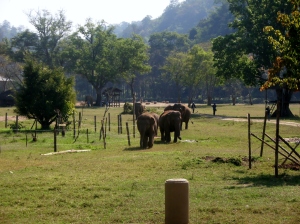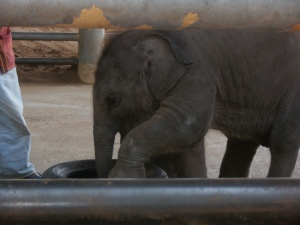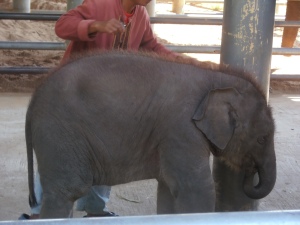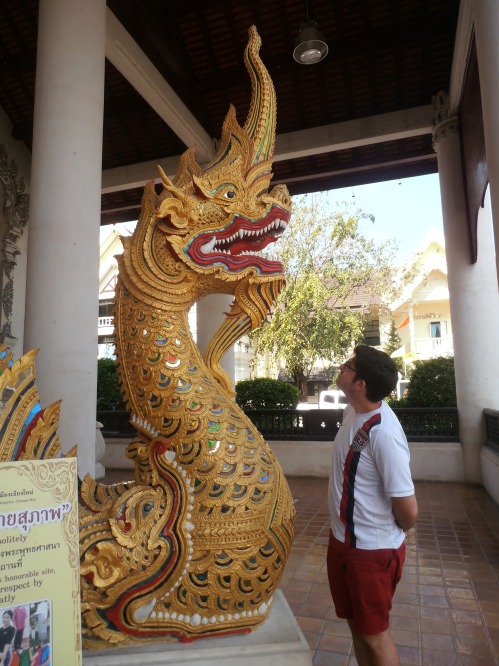Kat and I spent so much mental energy preparing for our trip to Burma that we actually didn’t think much about what we’d DO there. We had no idea what to expect when we landed in Yangon and were a bit nervous. We needn’t have been. Yangon is a very unique city in SE Asia and it has some of the friendliest “city people” in the entire world.
The Yangon airport is small but modern. Clearing immigration was easy though they did give each and every passport a very good hard look. I tried my best to look like an “office manager.” I must have succeeded. We then changed two crisp $100 bills into 170,000 Kyat, which was delivered in two thick bricks of 1,000 kyat notes. They gave our bills a once over but didn’t go too crazy.
Our cab driver from the airport spoke excellent English (as most cab drivers in Yangon did) and we had a chat about our itinerary. He advised us that one day was enough in Yangon and that we should move on as quickly as possible – which is what most tourists do. I am pleased to report that he was wrong and we quite enjoyed our 3 days in Yangon.
Let me get this out of the way here. Yangon was for many years known by the British name Rangoon. No, they do not have crab Rangoon here. They never have. It’s not a Burmese dish. I have no idea where the name comes from. Let’s move on.
In Yangon we stayed with our friend in his huge apartment just north of downtown. This was a really interesting place to stay because normally we would have stayed in the noisy, crowded downtown area. Instead we were in a shady tree-lined neighborhood filled largely with ex-pats and diplomats. I think If we’d stayed in a different part of the city we might have felt differently about it.
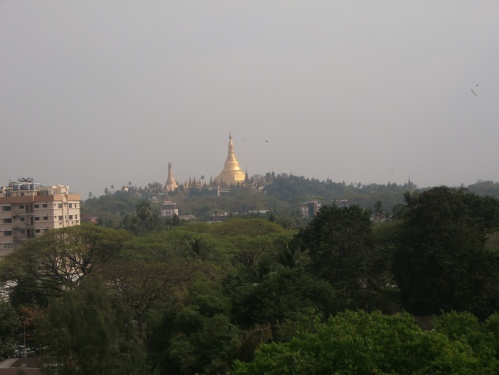
View of Shwedagon Pagoda from our friend’s apartment. Not too shabby. Out of frame — the pool a few floors down. This backpacker lifestyle can be ROUGH sometimes.
One downside of staying a bit out of downtown was that we had to pay a small fortune in cab fares. Yangon is juuuuust a bit too spread out to be walkable. Things would be 3-4 kilometers away from each other. Maybe you walk to one, but you have to cab to the next one and then cab home. The cabs only cost between $3-4 but they start adding up quickly. The cabs themselves are interesting — mostly Toyotas from the late 80’s. Also, while Myanmar drives on the same side of the road as the USA, most cars come from Japan, so the steering wheel is on the right side too. You don’t see many new cars because of international sanctions that have been levied against Myanmar for decades. Also unique to Yangon among Southeast Asian cities – very few motorbikes.
It was fascinating to walk around a modern city and see almost ZERO American cultural influence. There are no Starbucks, McDonald’s, 7-11’s or any western chain or business at all. Some people have cellphones, but not most people (There are “payphones” on the street, which are literally just office phones on a desk on the sidewalk – the man dials the number and hands you the phone). Some people were dressed in western style, but the vast majority of people (men and women, young and old alike) wear longyi which is basically a wrap skirt.
Despite being a major city, people in Yangon didn’t seem like “city people” (the type who even if they saw a flaming elephant tap-dancing and playing guitar on the head of a pin would shrug their shoulders and keep moving because they have places to be). They were friendly, warm and helpful (except one lady who we bought samosas from on the street – she was pretty mean, but woman made one kickass samosa).
One night downtown we stumbled upon a huge crowd of people seated on tiny little plastic stools blocking off an entire street. Hey, look! It’s people! And they’re doin’ stuff! Let’s go check it out. We stood around awkwardly for a while and eventually some guy just ran over to us with two (larger, white-person sized) stools. Just to be nice. What the crowd was waiting for was a pretty awesome dance troupe celebrating Chinese new year doing all kinds of acrobatic stuff while parading around a giant 20 foot long paper mache snake. People in the crowd were puzzled to see us, but there were countless smiles, shared laughs and waves from children.
Our travel agents are Burmese but they work out of the US Embassy in Yangon (where our friend also works) so we went to the embassy to pay them (in cash, in US dollars obvi). It may sound a bit corny, but when Kat and I saw the American flag flying above the embassy we both got a little emotional. I didn’t think it would affect me like that. We got even more emotional when our friend greeted us at the gate with a slice of true, homemade pecan pie that he’d won in a charity auction. Neither one of us really likes pecan pie, but it really and truly tasted like home. It was also hilarious to see all of the same government furniture and supplies that I left at my old job – it was like my desk had been recreated in Burma.
There’s not a ton to see or do in Yangon and the nightlife scene was a shock coming from Bangkok, the party capital of SE Asia. In Yangon, it’s hard to find dinner past 9 pm and the streets of downtown are pretty well deserted by 10 or 11 pm. The main thing that everyone comes to see is Shwedagon Pagoda, which is the holiest site in all of Myanmar.

Mrs. Banh Mi at Shwedagon. No mugging permitted in this photo because only Buddha is permitted to mug at this holy place.
In Burma we saw literally hundreds of not thousands of pagodas, temples, payas and stupas, but Shwedagon is pretty damn impressive. A giant stupa made out of gold which is said to house relics (usually hairs or teeth) of the four past Buddhas. I found the pagodas and temples in Burma to be interesting in that while they were religious sites, they also seemed to act just as regular meeting places for Burmese people to hang out and chat and there was a ton of commerce going on inside them as well. This is an interesting contrast to Thailand as Burma is considered a much more devout nation than Thailand but I found the Thai religious sites to have a much more somber and holy ambiance to them.
Yangon’s downtown was hot and chaotic and basically every block on the main roads had an open air market spilling off the sidewalks into the streets. It was intense but fun. Still, after 3 days while we felt like we’d barely gotten to know the city, we felt like a trip to cooler, less hectic climes might be in order. So we bought bus tickets to our next destination and topic of our next post – Inle Lake.



